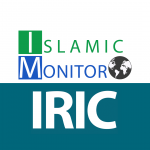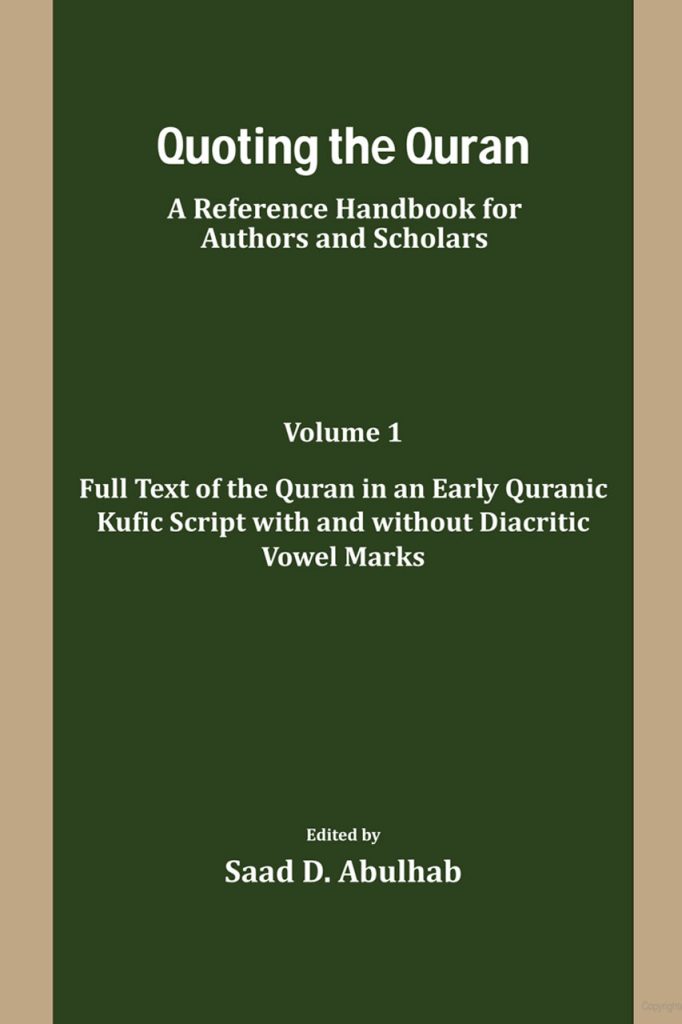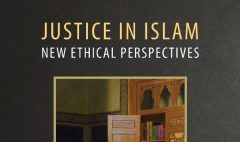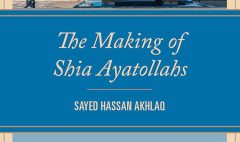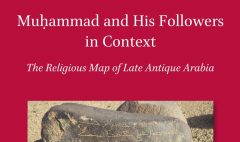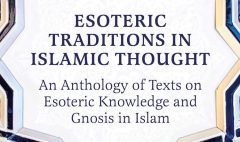Quoting the Quran: A Reference Handbook for Authors and Scholars
December 27, 2020 2023-10-08 8:31Quoting the Quran: A Reference Handbook for Authors and Scholars

Quoting the Quran: A Reference Handbook for Authors and Scholars
Publication Date: July 18, 2020
This handbook is a reference tool intended to help authors, scholars, and anyone else provide accurate and standardized quotations from the Quran, both from linguistic and historical perspectives.
The first volume of the handbook includes the full text of the Quran using a font mimicking its earliest script, Mashq or Early Kufic, and it is provided in two formats, with and without diacritic vowel marks.
The font used to generate the full texts in the first volume, Arabetics Mashq, was designed and implemented by the author after years of in-depth research of the actual historical Quranic manuscripts, notably the copy of Muṣḥaf ʿUthmān kept today in the Topkapi Museum in Turkey.
The second volume of the handbook also includes two full texts of the Quran. The full text of the first part is a complete, word-by-word Latin transliteration of the modern Arabic script full text of the Quran, using the ALA-LC Romanization Standards.
The second part includes a modern Arabic script full text of the Quran, including the full set of modern Arabic diacritic vowel marks. It is generated using Arabetics Latte, a multilingual font designed and implemented by the author to emphasize simple, clear shapes, and facilitate easy reading. Letters change shapes only minimally and are designed to have a large x-height. The diacritic vowel marks are placed intentionally away from the letters for clarity.
Reading the Quran in this font can be very helpful to both native and non-native Arabic readers. The full text of the Quran contained in this book is based on the Tanzil Quran Text, a carefully produced, highly verified and continuously monitored text by a group of specialists at Tanzil project.
Possibly, this handbook includes the first Latin transliterated copy ever of the Quran using the ALA-LC Romanization Standards. Both volumes include indexes for Quran chapters and verses and the necessary tables needed to help the readers understand the early Quranic Kufic script and the ALA-LC Romanization Standards.
Source: Amazon

